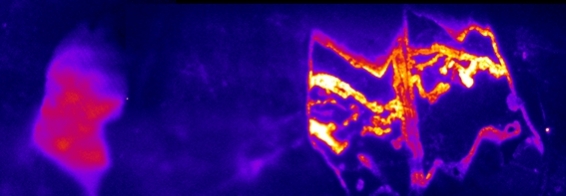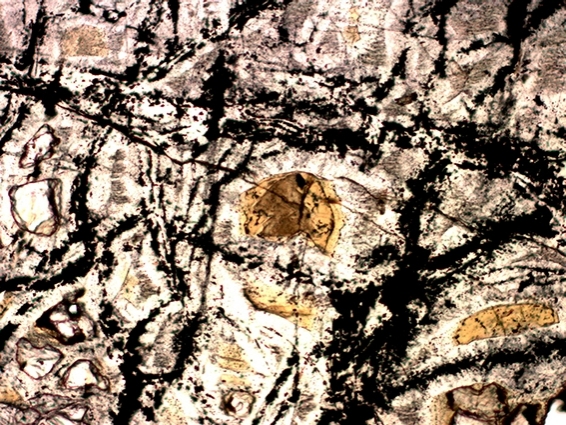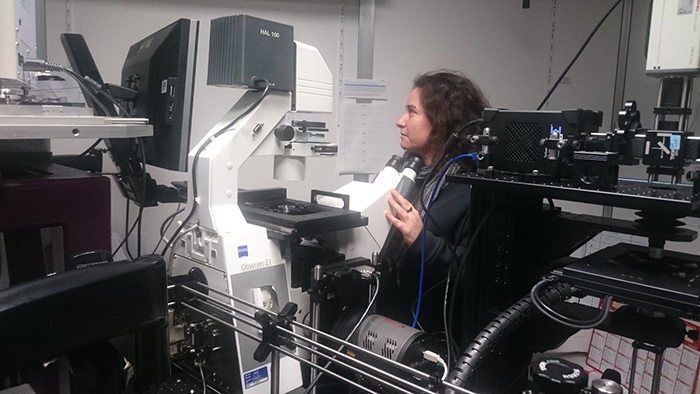The origin of life on Earth is an extremely complex research field for which several hypotheses are being considered. Some studies consider extra-terrestrial contributions via meteorites or asteroids as a source of organic molecules necessary for seeding the Earth. Others claim that our planet has and has had the potential to carry out prebiotic chemistry effective enough to generate the first building blocks of life. In a study published in the journal Nature (read more), researchers from the Institut de Physique du Globe de Paris, the University of Paris Diderot, the CNRS and the DISCO & SMIS beamlines at SOLEIL provide a first-rate argument in favour of this last hypothesis, overall supporting the hydrothermal theory for the origin of life, and even pushing back its possible emergence deeper in the Earth, well beyond the hydrothermal vents at the seafloor.
The living world is characterised by its capacity for autonomy and reproduction, but also by the great complexity of its organic structures. Understanding the transition from a mineral world to complex organic molecules that have lead to the first building blocks of life is therefore necessary to elucidating the emergence of life as we know it on Earth.
In the 50s, the laboratory experiment of two American researchers, Stanley Miller and Harold Urey, showed that under the extreme conditions that prevailed on the early Earth, the synthesis of such molecules could have been possible in the primordial atmosphere, before they spread to the shallow oceans, long before the emergence of life. However, this has never been proved to occur in natural environments and the conditions used in these experiments did not fully match the ones of the primitive atmosphere when life emerged on Earth.
In a study published on November 7, 2018 in Nature journal, a team of European scientists, led by Bénédicte Ménez and Céline Pisapia, geomicrobiologists at the Institut de Physique du Globe de Paris (IPGP/Université Paris Diderot/CNRS) and composed of researchers from the Laboratoire de Géologie de Lyon (Université Claude Bernard/ENS Lyon/CNRS), the DISCO & SMIS beamlines at SOLEIL, the Institut de Chimie des Substances Naturelles (CNRS) and Nazarbayev University in Kazakhstan, used an innovative correlative microscopy approach, which combines several high-resolution microimaging techniques, on samples from the oceanic lithosphere collected at about 170 m depth below seafloor during Expedition 304 of the International Ocean Drilling Program IODP (www.iodp.org). Thanks to this approach, the scientists found amino acids, which are complex molecules essential for life, synthesised abiotically during the alteration of deep oceanic rocks from the Atlantis Massif (mid-Atlantic ridge, 30°N).

Figure 1: UV autofluorescence image collected on DISCO beamline showing, in a clay, the presence of an amino acid, tryptophan, abiotically formed during the alteration of the oceanic crust. (© IPGP).
The interaction between seawater and minerals from these rocks derived from the Earth's mantle, jointly with the layered structure of clays resulting from this alteration process, may have provided the ideal conditions for the formation of these amino acids, which are potential primary precursors of the first building blocks of life, overall representing a "geological mirror” to Miller's atmospheric experiments. This observation provides the first evidence that such a process can occur in terrestrial rocks under conditions close to those that prevailed on early Earth.

Figure 2: Optical microscopy photo of a fine section of the rock in which the abiotic tryptophan (amino acid) was detected. The rock is composed of serpentine and saponite, both iron-rich (yellow-brown in the photo) spread out in a magnetite network (in black) © IPGP.
This discovery also allows proposing a new synthesis pathway for the formation of molecules of prebiotic interest on the primitive Earth or other planets. These innovative approach and major results open up new perspectives for future research in geobiology and astrobiology, but also in the field of renewable energy and "geo-inspired" chemical and industrial processes.

Figure 3: Céline Pisapia (Institut de Physique du Globe de Paris, Université Paris Diderot) working on DISCO beamline, where the deep UV fluorescence measurements have been carried out. These analysis allowed to detect the presence of tryptophan in the oceanic rocks (© IPGP).
